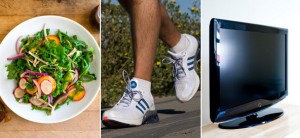Texas Family Welcomes ‘One in a Million’ Quadruplets

It might be a good time for the Hall family to buy lottery tickets after they welcomed a “one in a million” set of quadruplets into the world this week.
Anna and Josh Hall from Fort Worth, Texas, became the proud parents of Brooks, Sadie, Elle and Ivy on Monday at the Baylor Regional Medical Center at Grapevine. The babies were born at only 31 weeks and will remain in the hospital for six weeks, giving them a chance to gain weight before going home.
Even with fertility treatments, experts say a quadruplets birth is extremely rare. Dr. Sherry Kappler, a neonatologist at Baylor Regional Medical Center and Pediatrix medical group, called the chance “one in a million” and said the biggest risk for quadruplets was being born premature.
“Most [quadruplets] are born at 29 weeks but [they] made it to 31,” said Kappler. “When they’re born early, we worry about their lung and brain development.”
The babies were the first set of quadruplets to be delivered at the hospital and Kappler said the team made sure they were prepared.
“Just to take care of the babies is 12 people,” said Kappler. “We did a walk through and practice [with] practice babies. By the time Monday happened we all knew where we needed to be…We thank the babies for being such good patients.”

Josh Hall, already a father to two older daughters, said the quadruplets’ birth was even more special since it fell on his 36th birthday.
“It was a really fun birthday that will never be one upped,” said Hall, who acknowledges he’ll probably never get his own birthday celebration after the quadruplets’ birthday. “It went out with a bang.”
Hall said they were surprised when they learned about the number of infants during Anna’s pregnancy, but were thankful all four babies were healthy and happy.
“Everything changes,” said Hall of learning about the quadruplets for the first time. “We left the doctor’s office and we prayed together and talked about how we knew these babies were a blessing. We had wanted kids for so long, we were in fertility treatments for six years,” said Hall. “There was no other way we could look at this other than this as a blessing. ”
Source: ABC News Health

